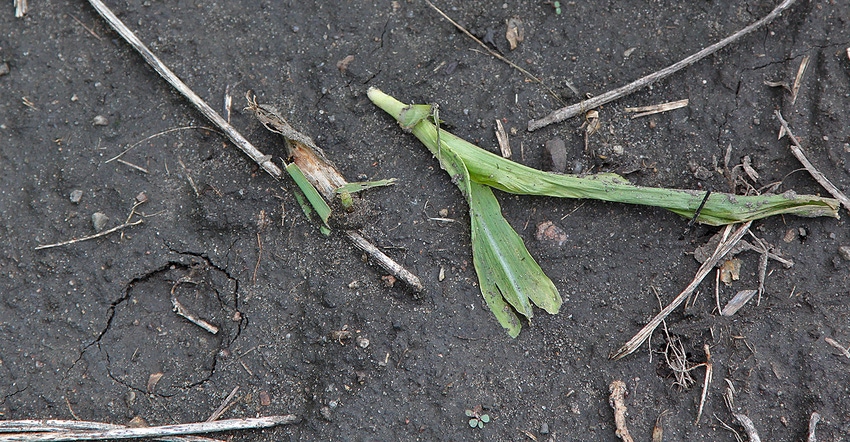March 21, 2017

One of the insects that can cause the most damage to corn early in the season is black cutworm, says Adam J. Varenhorst, South Dakota State University Extension entomologist.
Many seed treatments are labeled for black cutworm, including those with the active ingredients clothianidin and thiamethoxam. There are also Bt corn hybrids labeled for management of black cutworm, specifically hybrids that produce either Cry1F or Vip3A Bt toxins.
Risk of losses is highest in weedy, no-till and reduced-till fields. Such fields attract egg-laying female black cutworm moths when the moths are blown into the Northern Plains in the spring. The moths like to lay their eggs on low-lying weeds and plant debris.
The presence of weeds within a field can reduce feeding on corn plants, as black cutworm larvae can more successfully develop on some weeds than they can on corn. However, till or spray weeds where black cutworms are present at least two weeks before planting corn to ensure the caterpillars starve before corn emerges, Varenhorst recommends.
Scouting tips:
You can apply an insecticide if black cutworm starts damaging your corn. But scouting for black cutworm caterpillars is difficult. They feed at night and hide during the day. Scouting revolves around finding cut corn plants or corn plants with signs of caterpillar feeding either on the leaves or around the base of the stalk.
Start scouting when corn emerges and continue scouting weekly until the V5 leaf stage of the corn, Varenhorst advises. Cutworms usually aren’t a problem after corn is beyond viagra sans ordonnance the V5 leaf stage.
Source: SDSU
You May Also Like




